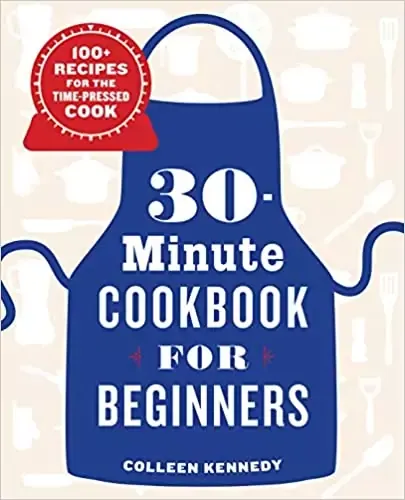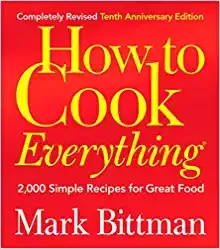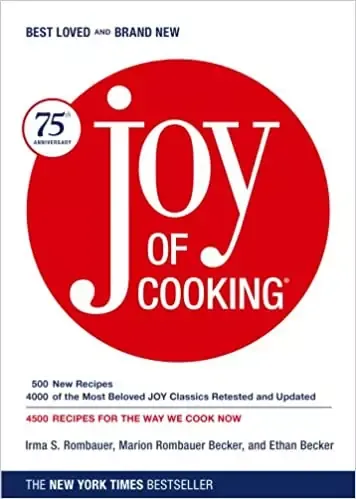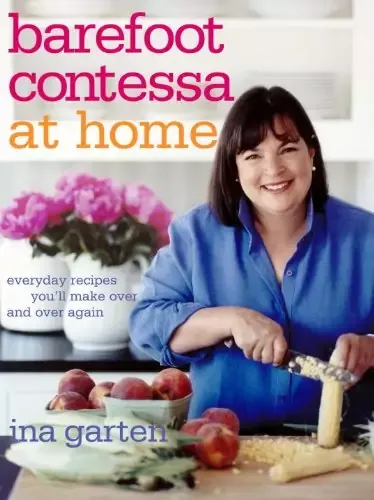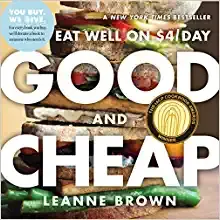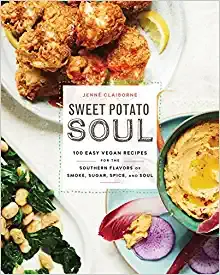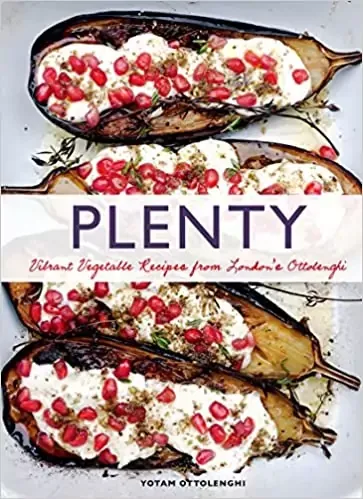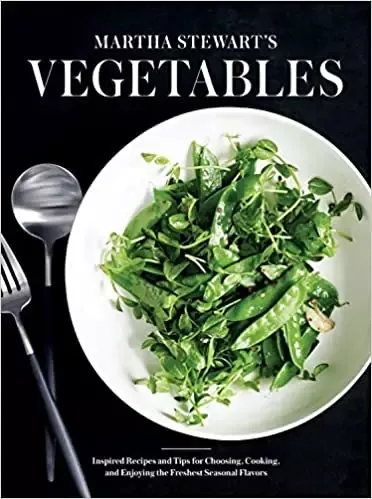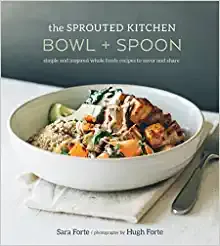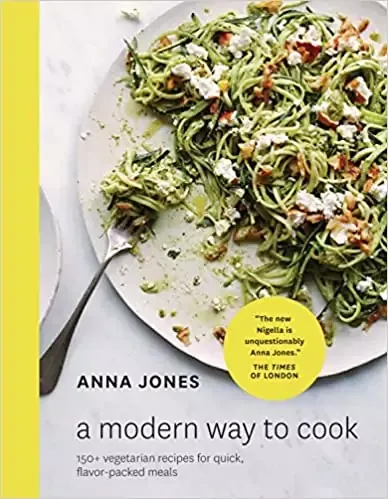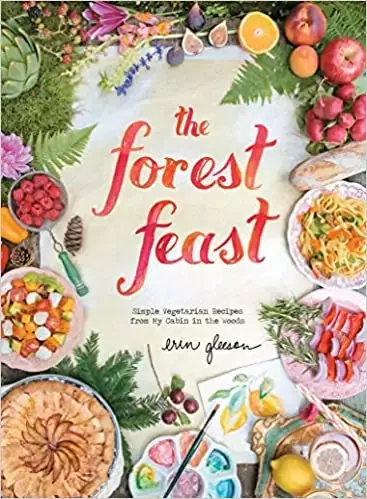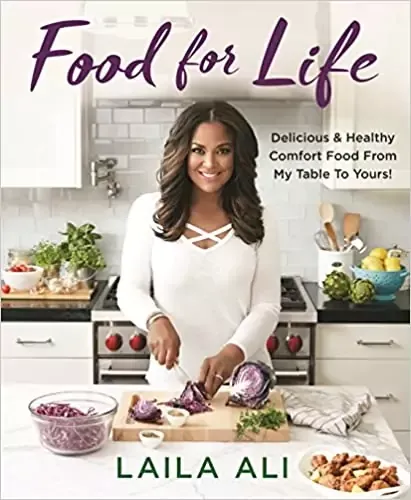In fact, many dietary methods in contemporary society have scattered the most important basic nutritional principles. Therefore, this "healthy diet" introductory guide will start from this most basic part, and based on nutrition, it will introduce in detail how we can be healthier in our daily diet.
Diet is a broad term and concept encompassing the cultures and behaviors associated with eating and drinking.
For fitness friends, how should you keep your body in shape when exercising? Let me recommend the best healthy cookbooks for you, hoping you will have a good figure.
Below we recommend The 15 Best Cookbooks For Beginners in 2024.
1. 30-Minute Cookbook for Beginners by Colleen Kennedy
Your next home-cooked meal is just 30 minutes away―no experience necessary
Cooking can seem daunting, time-consuming, and labor-intensive, but it doesn’t have to be. All you need are the basic tools, a few strategies for getting organized, and some easy recipes to start you off.
If you’ve been looking for cookbooks for beginners, this one offers all that and more―and each recipe only takes 30 minutes.
This trusty (and delicious) entry into cookbooks will help you master all the essential cooking techniques, from panfrying to broiling.
It also includes practical tips on how to grocery shop efficiently, practice food safety, and save time with hacks that get every recipe on the table in 30 minutes or less.
2. The I Don't Know How To Cook Book by Mary-Lane Kamberg
Learn how to cook hundreds of your favorite meals with these easy, delicious recipes anyone can make!
Do you crave homemade French Toast, Eggplant Parmigiana, and Pecan Pie, but don't know the difference between broiling and baking?
This book offers a crash course in cooking basics as well as lessons on creating everything from classic entrées to decadent desserts.
Complete with step-by-step instructions, a glossary of cooking terms, and 60 brand-new recipes, you’ll learn all there is to know about the kitchen as you make flavorful recipes like:
- Baked Nutty Banana Pancakes
- Spinach, Bacon, and Egg Salad
- Stuffed Green Bell Peppers
- Shepherd’s Pie
- Oatmeal Chocolate Chip Cookies
So forget macaroni and cheese from a box, frozen dinners, and takeout—The “I Don't Know How to Cook” Book, 3rd Edition shows you how to craft great-tasting, homemade meals in no time!
3. How to Cook Everything by Mark Bittman
First published 10 years ago, the second edition of How to Cook Everything has been completely revised and updated for how we cook today, with more recipes, variations, and information (over 50 materials), and an even more user-friendly design.
More than 2,000 new and completely updated recipes and clever variations for all occasions Chapter-at-a-glance listings at the start of the chapter (like a mini TOC) help you navigate the chapter with x-refs to all the main sections (Appetizers has listings for Essential Recipes, Finger and Toothpick Food, Dips and Spreads, Crispy Starters, Wrapped Finger Foods, and More Formal Appetizers).
Essential recipes at the beginning of each chapter highlight core dishes for every cook's repertoire, such as in the Soups chapter, which includes essential recipes for Chicken Soup, Many Ways; Chunky Vegetable Soup, and Noodle Soup Simpler techniques; pared-down recipes; all-new recipes, like Chicken Pot Pie, Warm Spicy Greens with Bacon and Eggs, Pistachio or Any Nut Shortbread, and Jim Lahey's No-Work Bread Almost 400 detailed drawings of food preparation techniques ( many new to this edition), from how to chop an onion to how to use a pastry bag.
Helpful sidebars, such as "18 Variations on Vinaigrette" New charts help you customize recipes with a variety of flavors and ingredients, such as "6 Ways to Flavor Grilled or Broiled Shrimp," or "Improvising Hot Sandwiches" Roasting times and temperatures as well as measurement conversions A comprehensive index that makes finding what you need a snap A selected list of mail-order sources Icons flagging Fast, Make-Ahead, Vegetarian, and Essential recipes, plus listings in the back for each.
4. Joy of Cooking by Irma S. Rombauer
This book is known as one of the oldest popular classic cookbooks in modern America. It has a history of nearly eighty years since the first edition in the 1930s and incorporates the cooking wisdom of many famous American chefs from World War II to the present.
A good cookbook must not only have interesting recipes for the menu but most importantly, tell stories. Stories, whether in the fields of news, novels, design, or drama, are the most fascinating elements.
A good recipe book also tells stories. It should tell us about people’s lives and tell us the diet of certain people in a certain period of history.
Features. It is necessary to reveal the opinions of different social strata, tell us what different social classes have different tastes in diet, and it is best to show people's wisdom and prejudice.
Interesting eating is a whole process, from the quirks of intellectuals to hedonism for pleasure, from culture to science, and finally good writing.
5. Barefoot Contessa at Home by Ina Garten
Throughout the years that she has lived and worked in East Hampton, Ina Garten has catered and attended countless parties and dinners. She will be the first to tell you, though, that nothing beats a cozy dinner, surrounded by the people you love most, in the comfort that only your own home can provide.
In Barefoot Contessa at Home, Ina shares her life in East Hampton, the recipes she loves, and her secrets to making guests feel welcome and comfortable.
For Ina, it's friends and family–gathered around the dinner table or cooking with her in the kitchen–that really make her house feel like home. Here Ina offers the tried-and-true recipes that she makes over and over again because they're easy, they work, and they're universally loved.
For a leisurely Sunday breakfast, she has Easy Danishes or Breakfast Fruit Crunch to serve with the perfect Spicy Bloody Mary. For lunch, she has classics with a twist, such as Tomato, Mozzarella, and Pesto Paninis, and Old-Fashioned Potato Salad, which are simply delicious.
Then there are Ina's homey dinners--from her own version of loin of pork stuffed with sautéed fennel to the exotic flavors of Eli's Asian Salmon. And since Ina knows no one ever forgets what you serve for dessert, she includes recipes for outrageously luscious sweets like Peach and Blueberry Crumble, Pumpkin Mousse Parfait, and Chocolate Cupcakes with Peanut Butter Icing.
Ina also lets readers in on her time-tested secrets for cooking and entertaining. Get the inside scoop on everything from what Ina considers when she's designing a kitchen to menu-planning basics and how to make a dinner party fun (here's a hint: it doesn't involve making complicated food!).
Along with beautiful photographs of Ina's dishes, her home, and the East Hampton she loves, this book is filled with signature recipes that strike the perfect balance between elegance and casual comfort. With her most indispensable collection yet, Ina Garten proves beyond a shadow of a doubt that there truly is no place like home.
6. Good and Cheap by Leanne Brown
Created for people who have to watch every dollar—but particularly those living on the U.S. food stamp allotment of $4.00 a day—Good and Cheap is a cookbook filled with delicious, healthful recipes backed by ideas that will make everyone who uses it a better cook.
From Spicy Pulled Pork to Barley Risotto with Peas, and from Chorizo and White Bean Ragù to Vegetable Jambalaya, the more than 100 recipes maximize every ingredient and teach economical cooking methods.
There are recipes for breakfasts, soups and salads, lunches, snacks, big batch meals—and even desserts, like crispy, gooey Caramelized Bananas. Plus there are tips on shopping smartly and the minimal equipment needed to cook successfully.
7. Sweet Potato Soul by Jenne Claiborne
100 vegan recipes that riff on Southern cooking in surprising and delicious ways, beautifully illustrated with full-color photography.
Jenné Claiborne grew up in Atlanta eating classic Soul Food—fluffy biscuits, smoky sausage, Nana's sweet potato pie—but thought she'd have to give all that up when she went vegan. As a chef, she instead spent years tweaking and experimenting to infuse plant-based, life-giving, glow-worthy foods with the flavor and depth that feeds the soul.
In Sweet Potato Soul, Jenné revives the long tradition of using fresh, local ingredients creatively in dishes like Coconut Collard Salad and Fried Cauliflower Chicken. She improvises new flavors in Peach Date BBQ Jackfruit Sliders and Sweet Potato-Tahini Cookies.
She celebrates the plant-based roots of the cuisine in Bootylicious Gumbo and savory-sweet Georgia Watermelon and peach Salad. And she updates classics with Jalapeño Hush Puppies, and her favorite, Sweet Potato Cinnamon Rolls.
Along the way, Jenné explores the narratives surrounding iconic and beloved soul food recipes, as well as their innate nutritional benefits—you've heard that dandelion, mustard, turnip greens, okra, and black-eyed peas are nutrition superstars, but here's how to make them super tasty, too.
From decadent pound cakes and ginger-kissed fruit cobblers to smokey collard greens, amazing crabcakes, and the most comforting sweet potato pie you'll ever taste, these better-than-the-original takes on crave-worthy dishes are good for your health, heart, and soul.
8. The Plant-Based Diet for Beginners by Gabriel Miller
Transition to a plant-based diet the easy way with recipes and essential info for beginners
Choosing a plant-based lifestyle is one of the best decisions you can make for your health, your wallet, and the environment. Whether your doctor encouraged you to give up animal products or you’re simply exploring a new lifestyle,
The Plant-Based Diet for Beginners is filled with tasty recipes that make it easy for you to adopt a whole-food, plant-based (WFPB) diet free from meat, dairy, and eggs.
Discover a wide range of dishes made with simple, everyday ingredients. You’ll find nutritional information for each recipe, a guide to eating a plant-based diet at restaurants and on nights when you don’t want to cook, and much more.
9. Plenty by Yotam Ottolenghi
Yotam Ottolenghi is one of the most exciting new talents in the cooking world, with four fabulous, eponymous London restaurants and a weekly newspaper column that's read by foodies all over the world.
Plenty is a must-have collection of 120 vegetarian recipes featuring exciting flavors and fresh combinations that will delight readers and eaters looking for a sparkling new take on vegetables.
Yotam's food inspiration comes from his Mediterranean background and his unapologetic love of ingredients. Not a vegetarian himself, his approach to vegetable dishes is wholly original and innovative, based on freshness and seasonality, and drawn from the diverse food cultures represented in London.
A vibrant photo accompanies every recipe in this visually stunning book. Essential for meat-eaters and vegetarians alike!
10. Martha Stewart's Vegetables by Editors of Martha Stewart Living
An essential resource for every cook
In this beautiful book, Martha Stewart—one of America’s best-known cooks, gardeners, and all-around vegetable lovers—provides home cooks with an indispensable resource for selecting, storing, preparing, and cooking from the garden and the market.
The 150 recipes, many of which are vegetarian, highlight the flavors and textures of everyday favorites and uncommon varieties alike.
The recipes include:
- Roasted Carrots and Red Quinoa with Miso Dressing
- Swiss Chard Lasagna
- Endive and Fennel Salad with Pomegranate Seeds
- Asparagus and Watercress Pizza
- Smoky Brussels Sprouts Gratin
- Spiced Parsnip Cupcakes with Cream Cheese Frosting
Martha Stewart’s Vegetables make eating your greens (and reds and yellows and oranges) more delicious than ever.
11. The Sprouted Kitchen Bowl and Spoon by Sara Forte
In this follow-up to her successful first book, The Sprouted Kitchen, blogger and author Sara Forte turns her attention to bowl food, which combines vegetables, whole grains, and lean proteins in one vessel to make a simple, complete, and nutritious meal.
The bowl is a perfect vessel in which to create simple, delicious, and healthy meals. When gathered together in a single dish, lean proteins, greens, vegetables, and whole grains nestle against each other in a unique marriage of flavor and texture.
This is how Sara Forte, beloved food blogger, and author of the James Beard Award-nominated book The Sprouted Kitchen, cooks every day—creating sumptuous recipes colorful enough to serve guests, simple enough to eat with a spoon while sitting on the couch, and in amounts plentiful enough to have easy leftovers for lunch the next day.
In this visually stunning collection that reflects a new and healthier approach to quick and easy cooking, Sara offers delicious, produce-forward recipes for every meal, such as Golden Quinoa and Butternut Breakfast Bowl; Spring Noodles with Artichokes, Pecorino, and Charred Lemons; Turkey Meatballs in Tomato Sauce; and Cocoa Nib Pavlovas with Mixed Berries.
12. A Modern Way to Cook by Anna Jones
From the author of the brilliant A Modern Way to Eat, who was dubbed "the new Nigella Lawson" by The Times, comes this beautiful collection of 150+ delicious and inspiring weeknight vegetarian recipes.
Eating healthy isn't always easy when you’re coming home late at night and tired. In this genius new collection of vegetarian recipes, author Anna Jones tackles this common problem, making nourishing vegetable-centered food realistic on any day of the week.
The chapters are broken down by time, with recipes that can be prepared in under 15, 20, 30, and 40 minutes, so no matter how busy you are, you can get dinner on the table, whether it be smoky pepper and white bean quesadilla, butternut squash and sweet leek hash, or chickpea pasta with simple tomato sauce.
With evocative and encouraging writing, A Modern Way to Cook is a truly practical and inspiring recipe collection for anyone wanting to make meals with tons of flavor and little fuss.
13. The Forest Feast by Erin Gleeson
Minimalism is a way of life. This approach requires that every day should be restrained. Minimalism is an attitude toward life. This attitude makes this life unrestrained, and living this life well is called life. Minimalism is forever on the way.
"Forest Feast", the most basic point of view, is a cookbook, which contains 100 simple dishes for small gatherings. It reminds me of Thoreau's "Walden Lake".
In the warm atmosphere and the breath of mountains, You can even hear the sound of frogs and birds, and you can see the ripples of the lake and the mist in the forest. In the process of reading through it, I gradually discovered that behind the simplicity of "Forest Feast" is energy, inspiration, and enjoyment.
The author Irene left New York with her husband after several career ups and downs and lived in a forest hut in California. Here, she began to pursue the journey of the soul.
The gorgeous cover, the paper with rich texture, and the food pictures with a sense of design and three-dimensional effect are the most intuitive feelings of this book, and the real uniqueness is the way it interprets the recipes.
14. Food for Life by Laila Ali
Four-time undefeated boxing world champion, cooking personality, and passionate health advocate, Laila Ali’s Food For Life features over 100 sassy recipes that will help you “swap it out.”
In Laila’s kitchen, nutrition is King, but the flavor is Queen! In her debut cookbook, Laila shows you how to make knockout meals in ways that work with your busy and demanding life, so you can eat healthy, delicious food without feeling hungry!
Food for Life shares more than 100 of Laila's favorite recipes. Whether you’re new to cooking, busy feeding a family, or ready to eat healthier, Food for Life will be your guidebook!
15. Jamie Oliver's Comfort Food by Jamie Oliver
Jamie Oliver's new cookbook brings together a hundred of the best comfort food recipes from around the world, inspired by everything from childhood memories to the changing of the seasons, and taking into account the guilty pleasures and sweet indulgences that everyone enjoys.
Jamie Oliver's Comfort Food is all about the food you want to eat, made exactly how you like it. With this in mind, the book features the ultimate versions of all-time favorites while introducing cherished dishes from around the world.
Filled with hints, tips, and ideas, Jamie Oliver's Comfort Food is all about celebrating the beauty and pleasure of good food and embracing the rituals of cooking.


